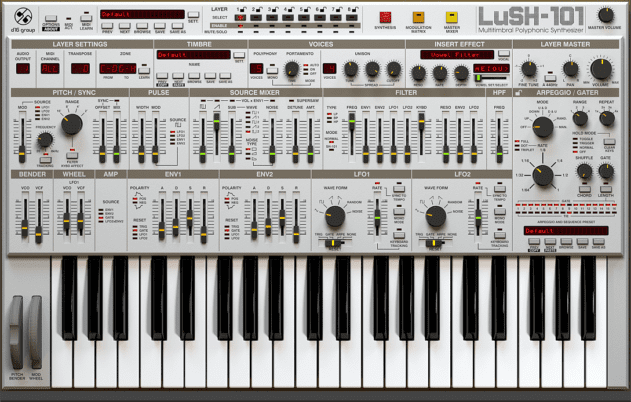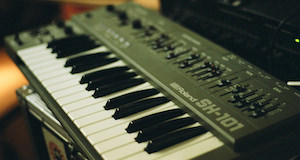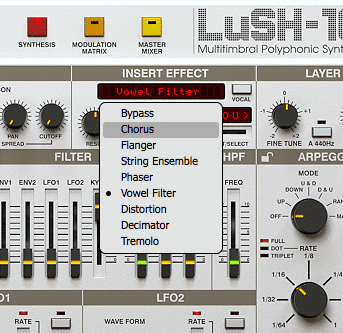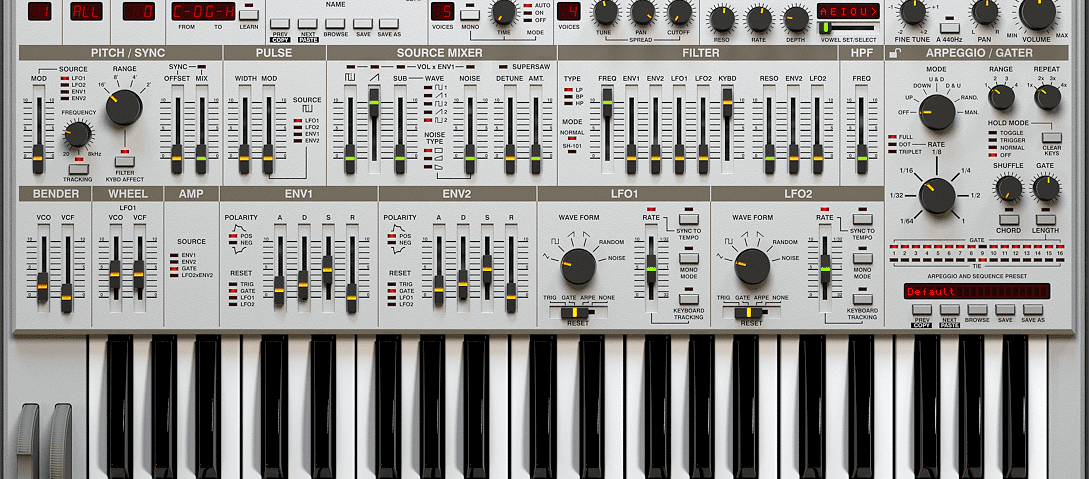Three years in the making, D16’s emulation of the classic Roland SH-101 has been one of the most anticipated soft synths of the last few years. Can it live up to the hype?

Since its release in 1983, the sound and simplicity of the Roland SH-101 has seen it used extensively by Aphex Twin, Josh Wink, the Chemical Brothers, Boards Of Canada and Squarepusher to name a few. With a good second-hand example now costing anywhere from £500 to £900, it was long overdue a decent soft synth emulation. Finally, after three years in the making, D16 Group have released the LuSH-101 plugin (originally – and somewhat bizarrely – intended to be named Shioitor).
LuSH-101 vs SH-101

The real deal: Roland’s SH-101
The original hardware on which LuSH-101 is based is one of the most simple, basic but incredibly effective synths ever made. The SH-101 offers a single oscillator (sawtooth and square/pulse waves plus a square/pulse sub-oscillator either one or two octaves down). The low-pass filter is a resonant 24dB/oct design based on the IR3109 chip also found in the early Junos, the Jupiters and the JX-3P
. There’s one LFO (assignable to pitch, pulse width or filter cutoff) and one envelope generator (for the VCA, the VCF or both). And… that’s pretty much it.
Although the architecture itself is simple, that doesn’t necessarily mean the sound’s easy to imitate. The main question when reviewing any emulation is how closely it replicates the sound of the real thing. Playing LuSH-101 alongside my own SH-101 it’s immediately clear that it’s very close.
Like the Juno 6/60 and 106, the SH-101 has a very large ‘sweet spot’ – it doesn’t take much work to find a great sound and it’s very difficult to dial in anything totally unusable. LuSH-101 has captured this characteristic very well. It’s similar to TAL’s excellent U-NO-LX plugin in this regard. If you restrict yourself solely to the options offered by the original synths, both these plugins offer something very close to a foolproof approach to creating great sounds.
Identical settings don’t necessarily sound exactly the same, but that’s true of any two apparently identical analogue synths anyway, so it’s not really the point. What’s more important is that you create a sound on the SH then dial in a fairly accurate imitation using LuSH. Sticking to the capabilities of the original hardware, LuSH-101 delivers great monophonic sounds:
Audio Player Audio PlayerAdded extras
 Far from being a mere emulation of the SH-101, however, LuSH-101 boasts a wealth of hugely powerful features that carry the original into the 21st
Far from being a mere emulation of the SH-101, however, LuSH-101 boasts a wealth of hugely powerful features that carry the original into the 21st
century, the most obvious of which is the addition of polyphony. Adding polyphony to classic monosynths doesn’t always work very well. Some monosynths are simply so fat and powerful that trying to play chords almost inevitably results in big, brash timbres which totally overwhelm the mix – just spend a few minutes wrestling to get a subtle polyphonic sound out of a Minimoog emulation and you’ll see the problem.
In this case, however, it’s a big success. The simple addition of a few extra voicings coupled with subtle tuning and panning demonstrates how instantly playable the polyphony on LuSH-101 is. In the example below we’ve increased the polyphony and unison as shown in the screengrab on the right, using nothing more complex than the raw sawtooth wave.
Audio Player
Additions to the original SH-101 architecture include up to 32-voice polyphony; up to 16-voice unison; a sawtooth sub; a supersaw wave; additional envelopes and LFOs (both of which can be tempo-synced to the host’s tempo); a much more versatile arpeggiator than the original hardware; a number of high quality insert effects and an easy-to-use modulation matrix window for assigning MIDI events to effects and parameters.
However, it’s the multi-layer capabilities of LuSH-101 that really set it apart. Each instance of the plugin contains eight layers, each of which essentially acts as an individual synth with its own settings and modulation matrix. With these different layers assignable to different split keyboard regions and routable to different outputs, it’s easy to see how versatile and incredibly powerful this could be in a live situation as well as in the studio.

05.47 AM
HEY! What about the TAL emulator?
11.23 PM
The TAL synth isn’t an SH-101 emulator, it just looks like one. It is a nifty little soft synth though.
01.21 AM
Surely the TAL intends to be a TAL emulation.
11.49 PM
The TAL Baseline 101 is superb.